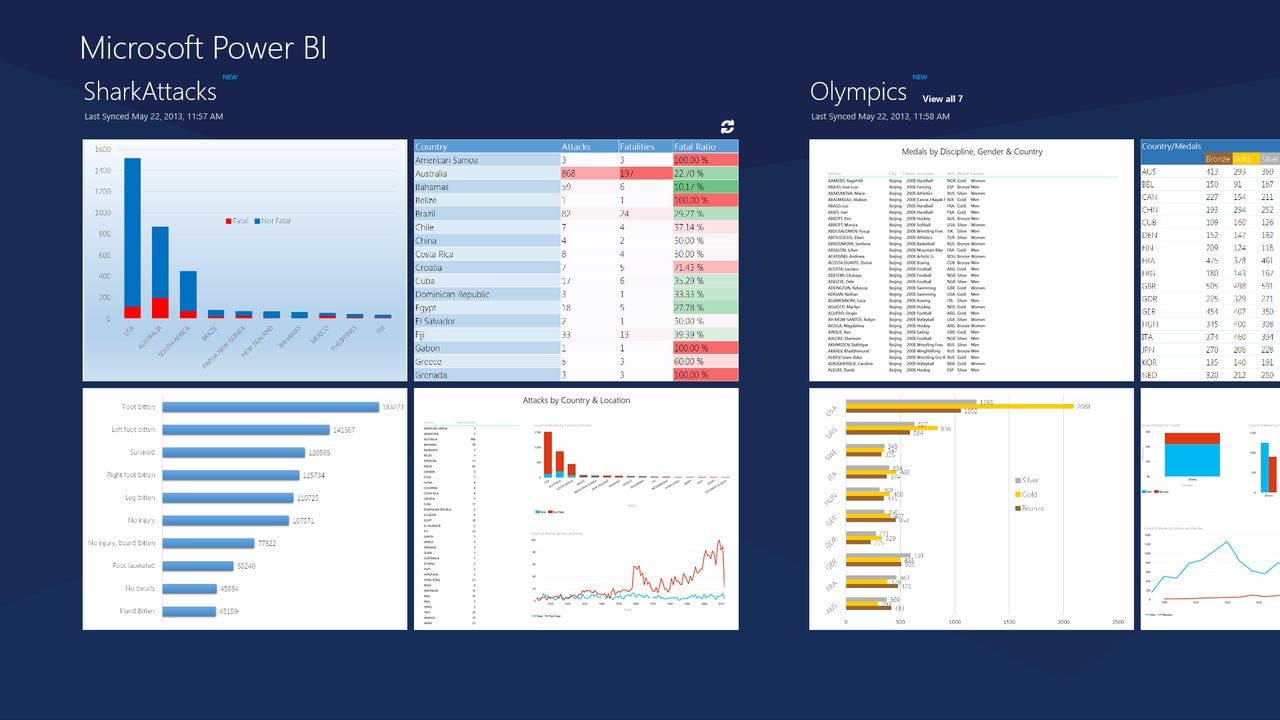Microsoft Announces Power BI for Office 365

Microsoft’s been in the Business Intelligence (BI) game since the late 1990s, and its products in that space have been genuinely innovative. But Microsoft has added value to its BI stack only in fits and starts.
For example, Microsoft took a nearly five year hiatus in improving its Analysis Services engine, between the release of SQL Server 2005 and that of PowerPivot in 2010. Microsoft introduced PerformancePoint – a rather mediocre dashboarding and analytics product, in 2007 and it wasn’t until last year’s release of Power View that Microsoft got data exploration and visualization right.
Recent developments
One could thus say that PowerPivot and Power View constitute a sort of BI renaissance at Microsoft. Add to that the company’s close collaboration with Hortonworks on its HDInsight Hadoop offering, and things have been looking like they are starting to come together. Microsoft’s recent "Data Explorer" and "GeoFlow" preview BI add-ins for Excel have enhanced the picture further.
But gaps have remained. To date, Microsoft has lacked a credible mobile (tablet-based) BI solution and has only exposed small pieces of its BI stack in its Office 365 and Windows Azure cloud platforms.
The next move
Today though, these deficits are finally being addressed. At this week’s Microsoft Worldwide Partner Conference (WPC), Server and Tools Business President Satya Nadella is announcing Power BI for Office 365, which fills the mobile and cloud BI gaps, using the technology in PowerPivot, Power View, "Data Explorer" – now branded Power Query, and “GeoFlow” – now branded Power Maps. The package will also include natural language query capabilities (initially in English only).
Since the technology is based on several Excel add-ins, that application will be the authoring environment for Power BI. Delivery/presentation of the authored assets will be through SharePoint Online in Office 365, as well a dedicated mobile apps. A preview of Power BI will come to market later this summer, with general availability to follow at an unspecified date. Customers can sign up to be notified of the preview's availability at http://www.office.com/powerbi.
Have mobile BI, will travel
The first native mobile app will, unsurprisingly, be for Windows 8 and Windows RT devices, but a native iPad app is on the way as well. SharePoint delivery of the various visualizations will provide coverage for Mac, PCs running Windows 7 or earlier and for mobile platforms other than Windows and iOS.

SharePoint will render Power BI visualizations in HTML 5, avoiding the Silverlight requirement that has been in place for Power View up to this point, and which is incompatible with platforms other than Mac OS and Intel-based Windows implementations.
Features, features, features
The Power BI suite which, to review, consists of PowerPivot, Power View, Power Query and Power Maps, will provide a rather comprehensive solution. PowerPivot allows for self-service data modeling which can be as simple as importing and linking data tables, or as complex as defining calculated columns, key performance indicators (KPIs), dimensional hierarchies and representative images and fields.
Power Query allows data to be imported into PowerPivot data models from sources ranging from conventional relational databases to Facebook and the Hadoop Distributed File System (HDFS). Power View allows for ad hoc, self-service data visualization and Power Maps makes it extremely easy to view data containing almost any geographical attributes (even simple province/country parings) in a 3D-rendered Bing Maps environment -- users can even record full-motion screencast "tours" of the data.
Wherefore cloud-only?
Making Power BI available exclusively through subscription (at least for now) will likely frustrate many on-premise SharePoint customers. On the other hand, using the cloud as an entry point for Mobile BI makes sense, for a few reasons
- Many of Microsoft’s mobile BI competitors already have cloud offerings
- The growth area for BI is with small and medium businesses and/or with business units within larger corporations, who will find cloud implementations attractive given their minimal set-up and small up-front expense
- Many corporate SharePoint and Office customers upgrade to the newest version of those products very slowly, thus hindering their adoption of Microsoft BI technology that has dependencies on the latest versions of Excel and SharePoint. So even these customers may find the cloud implementation of Power BI the most convenient.
Competitive spirit
Does Power BI give Microsoft what it needs to compete with self-service BI kings Tableau and QlikView, or its nimble full-BI stack competitor MicroStrategy? Is the PowerPivot engine's columnar, in-memory engine a match for the vector-based, in-CPU technology and data visualization chops of BI startup SiSense?
Microsoft has a lot of work ahead of it, but the momentum of Office 365 (1 in 4 Office customer accounts now use it) should help, and the alignment of Power BI with Microsoft’s recent Devices and Services credo likely makes insurance of its success a huge priority in Redmond.
An official blog post on Power BI for Office 365 shoul be available by the time you read this.